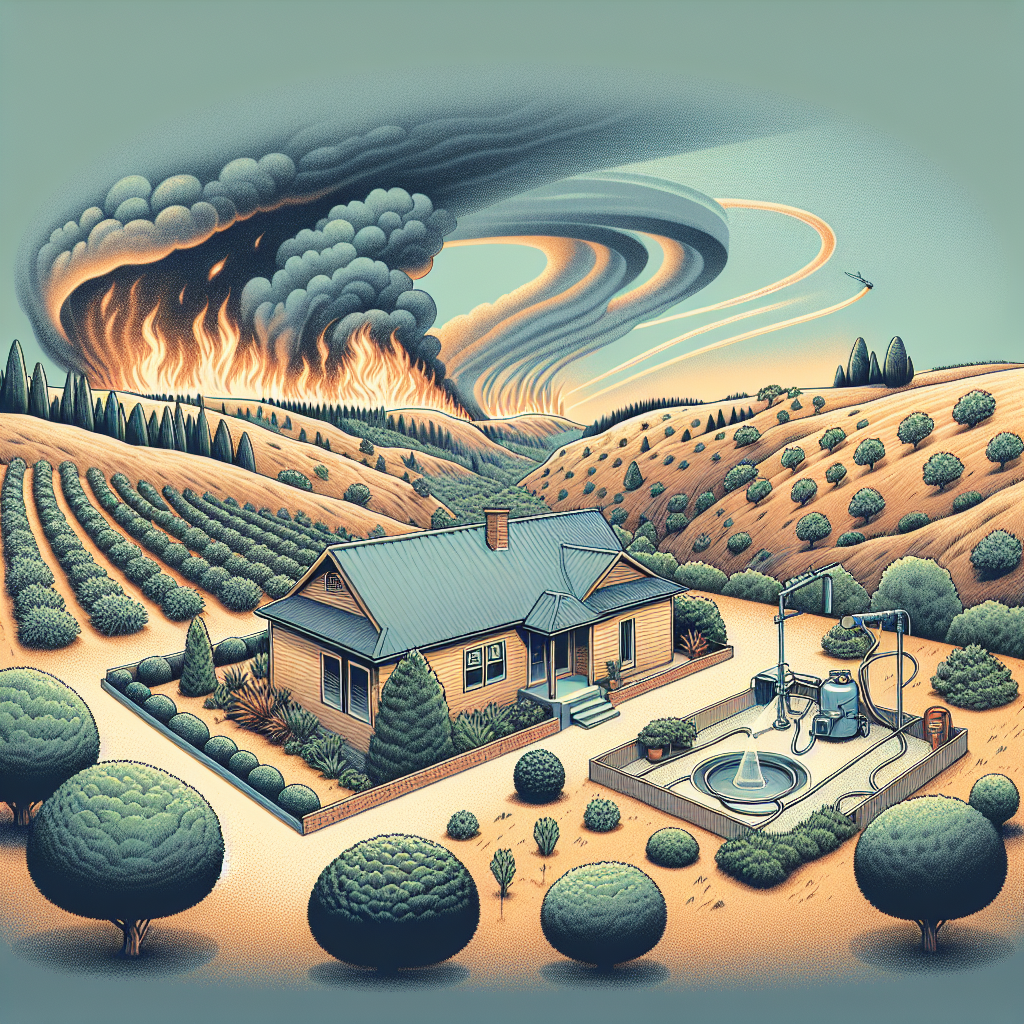Filed under Home Insurance on
Wildfire-Proof Your Home and Insurance Today

In recent years, wildfires have increasingly become a pressing concern for homeowners across the globe. While the impact of climate change and erratic weather patterns have amplified their frequency and intensity, the necessity to mitigate the risks and potential damages can't be overstated. Homeowners are searching for reliable ways to wildfire-proof their homes and invest in suitable insurance coverage to safeguard their assets and peace of mind.
Understanding the Growing Threat of Wildfires
Wildfires, fueled by dry conditions, heat waves, and strong winds, pose a catastrophic risk to both lives and properties. With escalating wildfire incidents in regions such as California, Australia, and the Mediterranean, it's more crucial than ever to ensure your home is equipped to withstand these impending threats.
Experts suggest that the combination of proactive home measures and comprehensive insurance is key. As the saying goes, "Hope for the best, but prepare for the worst." Wildfire-proofing your home isn't merely about installing protective barriers; it's a strategic approach that envelops preparation, materials, and insurance.
Steps to Wildfire-Proof Your Home
Creating a defensible space around your property is the first step in the wildfire-proofing journey.
Maintain Landscaping
Clear Flammable Vegetation: Remove dead trees, brush, and other flammable vegetation in close proximity to your home. It's recommended to maintain a 30-foot zone of clearance to provide a buffer against flames.
Plant Fire-Resistant Plants: Opt for plants with high moisture content, such as ice plant, rockrose, and aloe vera, which are less likely to catch fire.
Trim Trees: Ensure tree branches are trimmed at least 10 feet away from structures and other trees to prevent the spread of fire.
Enhance Building Materials
Fire-Resistant Roofing: Invest in Class A fire-rated roofing materials such as metal, slate, or specially treated shingles.
Non-Combustible Siding: Use materials like brick, stucco, or fiber cement siding that are more resistant to fire.
Sealed Eaves and Vents: Install mesh screens over vents and eaves to keep embers from entering your home.
Implement Safety Systems
Sprinkler Systems: Consider installing both interior and exterior sprinkler systems to dampen structures and surrounding areas.
Fire Retardants: Use long-term fire retardant coatings on surfaces such as decks and balconies to reduce flammability.
Backup Power Supply: Ensure access to a generator to maintain fire prevention systems during power outages, which are common during wildfires.
Securing Adequate Insurance Coverage
While enhancing your home's resilience to fire is pivotal, having comprehensive insurance ensures financial protection in the aftermath of a disaster. Here are crucial steps to align your insurance policy with wildfire risks.
Evaluate Your Current Policy
Begin by reviewing your existing homeowner’s insurance policy. Assess whether it covers wildfire damage, and more importantly, if the coverage limits are sufficient to rebuild your home in today's market conditions.
Extended Replacement Cost Coverage: This upgrade not only covers the cost to rebuild your home but also provides additional funds if construction costs rise due to increased demand post-wildfire.
Additional Living Expenses (ALE): Ensure your policy includes ALE, which covers temporary housing and living costs if your home is rendered uninhabitable.
Explore Additional Coverage
Consider supplementing your insurance with additional coverage options specifically tailored for wildfire-prone areas.
Fire Department Service Charge: Some insurers offer coverage that pays for the cost associated with fire department services.
Landscaping Protection: Extend your policy to cover damage to landscaping, which often falls outside standard homeowner policies.
Stay Informed and Proactive
An essential element of both wildfire-proofing and insurance preparation is staying well-informed. Engage with local fire authorities to understand the specific risks in your area and participate in community efforts to bolster wildfire preparedness.
Attend workshops or webinars that discuss the latest techniques and technologies in wildfire prevention and safety. Staying up-to-date on industry trends and evolving fire-resistant materials can provide a competitive edge when fortifying your home.
Expert Opinions and Industry Trends
Drawing insights from fire safety experts and insurance professionals can offer invaluable assistance in developing a robust wildfire-proofing strategy.
According to a study conducted by the National Fire Protection Association, homes constructed with fire-resistant materials and maintained with a clear defensible zone have significantly higher chances of surviving a wildfire. Embracing this data-driven approach is crucial for homeowners seeking effective solutions.
Adapting to Climate Change
Climate scientists emphasize adapting to evolving weather patterns with resilience measures tailored to your region's unique challenges. Whether that involves shifting to more fire-resistant construction materials or modifying insurance coverage, proactivity is key.
Technological Innovations
The insurance industry is also leaning into technological innovations. Insurtech companies are experimenting with predictive tools using satellite data and AI to assess wildfire risk, helping homeowners make informed decisions on coverage and mitigation measures.
Conclusion
In an era where wildfires are no longer distant possibilities but present realities, safeguarding your home with a comprehensive wildfire-proof and insurance strategy is imperative. Combining home preparation tactics, from landscaping to materials selection, with informed insurance decisions provides the best defense against the ravages of wildfire.
Implementing these strategies not only protects your property but also empowers you as part of a broader effort to combat the alarming trends of increasing natural calamities. Be proactive, stay educated, and secure the future of your home today.





